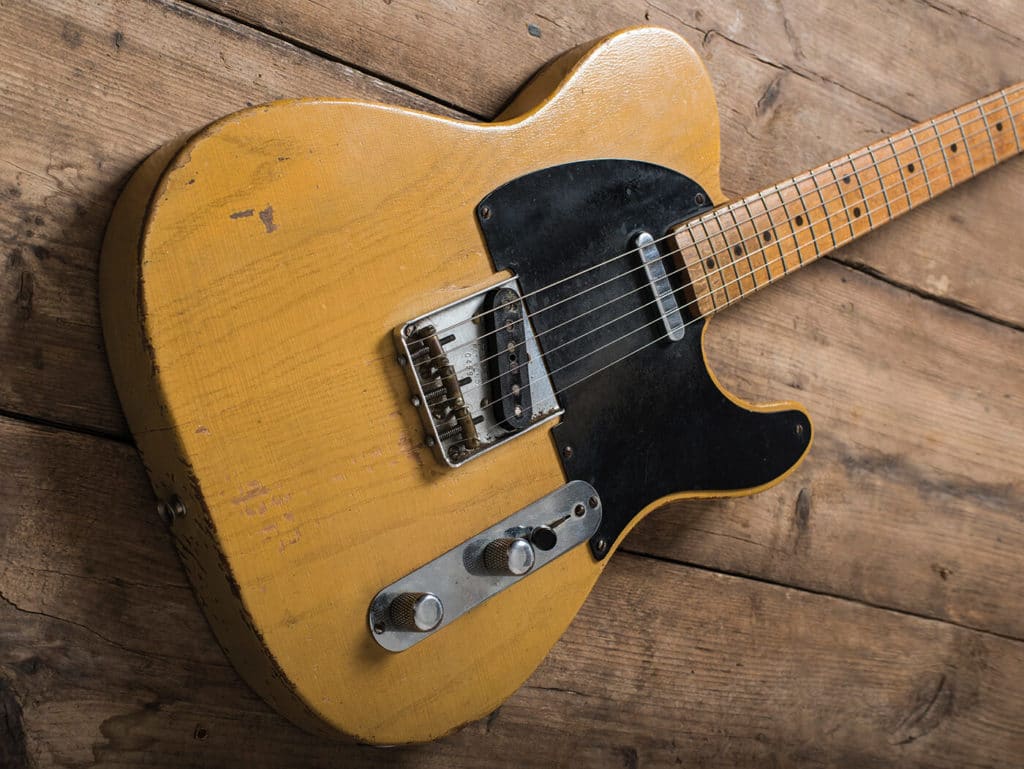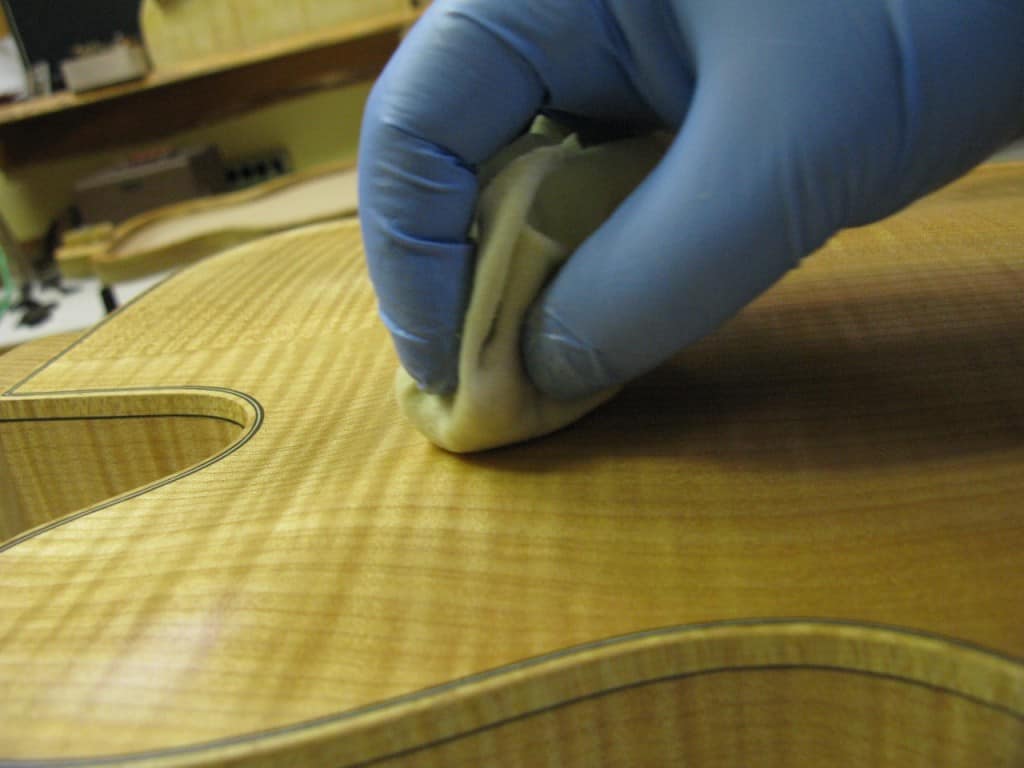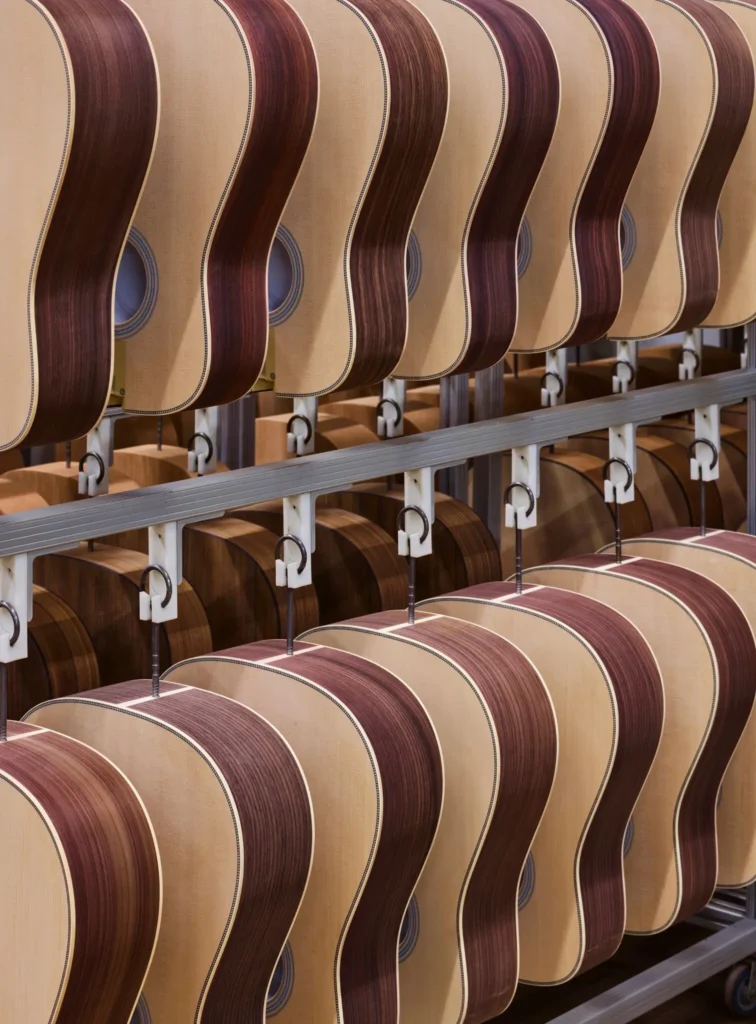History of the Fender Blonde finish
When Fender launched the first mass-produced solid body electric guitars in 1950, the Esquire and Broadcaster Blonde became the leaders of a new niche in the music industry, as well as advancing guitar building as a large-scale industrial process.
The goal of the company’s founder, Leo Fender, was to cost-effectively and consistently manufacture a rugged product that would improve performance in areas such as intonation and action, and that would also be relatively easy to maintain and repair.
Because the company’s manufacturing practices have evolved over time, it can be difficult to trace how, exactly, things were made at Fender. As a result, a mythology has arisen within guitar culture regarding the intricacies of how these ancient instruments were assembled, from the obscure origin of the “clay” fretboard stitches to the obscure art of guitar finishing. But careful research into the guitars of the golden age yields data that reveals a clearer picture of Leo’s methods.
Old-fashioned simplicity was the key to Fender’s early success during the 1950s and early 1960s.
Under Leo’s watchful eye and driven by his engineering instincts, the company’s guitar building techniques were constantly refined and streamlined as a means of improving quality and profits.
“Leo never changed anything unless he felt it made it better,” begins Mike Lewis, vice president of product development in Fender’s custom shop, referring to pre-CBS design alterations such as multi-layered pickguards, extra screws and rosewood fingerboards.
He continues: “Making it better included making it last longer. It was a change for the better and part of that improvement was to make it stay in service for longer and require fewer repairs – resulting in happier customers!”
Despite great advances in mass-production technology since Leo’s heyday, guitar builders at Fender and elsewhere have been revisiting old techniques and designs in order to recreate some of that vintage magic. “Every guitar is a journey,” Mike reminds us. And in the case of Fender’s Blonde-finished guitars, it’s a pilgrimage back into the company’s past, to a time when people were just starting to take notice of solidbody guitars.
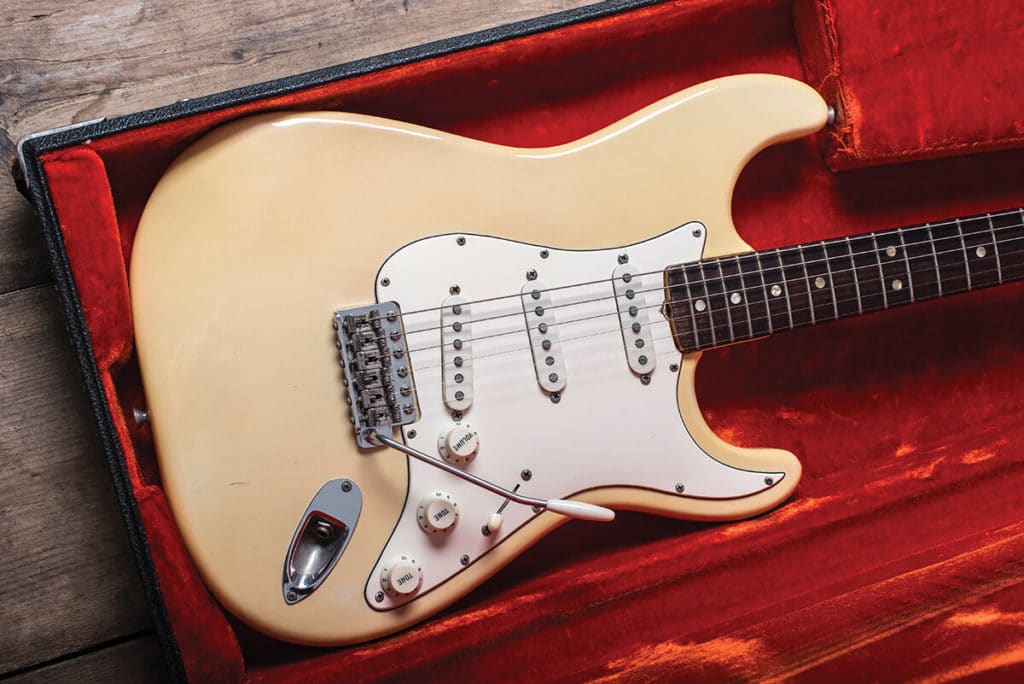
This Strat Blonde dates from the early 1970s, when the finish was often barely transparent. These Blondes are often confused with the Olympic White (opaque).
Birth of the Telecaster
As the post-war economic boom took hold and television became an increasingly dominant part of popular culture, Leo Fender embraced the medium by renaming his new invention the Telecaster in 1951.

“The blackguard Tele looked perfect on black and white television,” says Mike. “It’s hard to know if that’s why they did it, if they had that kind of foresight,” he reflects, “but it turned out really well. When you watch some of those old shows, if you see guys with black or sunburst guitars, or any other colour, it looks like a ‘thing’, but the Teles Blonde and Blackguard always stood out.
By name, aesthetics and sound, the Telecaster Blonde seemed to perfectly embody the post-war era. Along with television, white goods, colourful cars and a generally brighter outlook on life, light-coloured furniture was all the rage. Leo’s choice of the Blonde finish was therefore fortuitous in terms of the Telecaster’s ability to grab the attention of television, something that was not lost on Gibson, who later released the Les Paul TV Yellow in 1954. As Mike points out, “When the blackguard Blonde Tele first came out, nobody else was making solidbodies”.
“I don’t know if it was intentional or accidental, but it seems like everyone picked up on it, and you started to see a lot of Blonde guitars”.
Although a few black Esquire’s appeared early on, Fender decided to persevere with their choice of Blonde finishes from the beginning and easily experimented with various materials and techniques to come up with the winning formula. “There was a hand-applied Blonde very early on, before they developed the spray technique,” says Ron Thorn, lead master builder at the Fender Custom Shop.
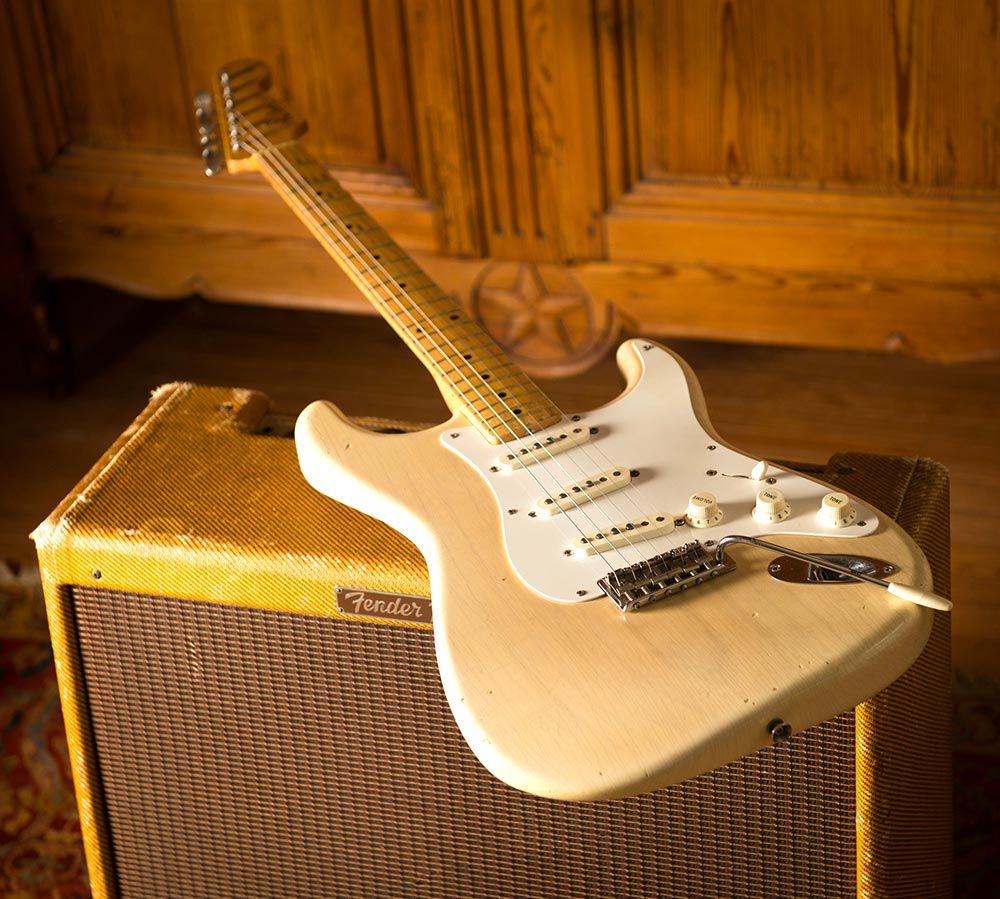
Although Blonde remained the standard finish for Teles, it was only available for Strats as a custom colour, as exemplified by this rare 1957 Strat ‘Mary Kaye’.
Butterscotch & Blonde
Although there is some variation among the Blonde finishes of the early 1950s, they are usually characterised by a distinctive yellow tint that is often described as “butterscotch”. However, in 1954, when Fender began using paint from the automotive industry, it changed to a markedly lighter shade. “They used DuPont Duco colours, the same colours that were used on cars,” Mike explains. This change to a more UV-resistant formula inhibited pigment degradation and fading associated with ageing, with effects on the guitar’s appearance.
The original guitars that we call “butterscotch” were not necessarily that colour when new
“I think UV inhibitors started to get into the finishes,” Ron continues, “both in the automotive industry and in the lacquer, anything that started to yellow when it was exposed to sunlight. They started putting these UV inhibitors in the colour and in the clear top coat to prevent it from changing, and I think that affected the appearance of the guitars over the years. I suspect the type of varnish changed every couple of months, depending on what was available and maybe what was cheaper.”
“The original guitars, which we call ‘Butterscotch’, weren’t necessarily that colour when they were new,” Mike explains. “I think the actual composition of the finish materials changed and that’s why they didn’t yellow as much. I’ve seen some much more caramel-coloured than others. There are always inconsistencies in the colours, and how can we know for sure if they changed the formula, or what they changed and why? But I know Fender listened very carefully to the customers.
As to why it went from being “caramel” to a much whiter Blonde, it could easily have been that people asked for it. Or, after a while, maybe they became too yellow and people complained about it. The thing to remember is that, back in the day, when everything was new, there wasn’t this whole “it’s supposed to be like this” story, they were making it up as they went along.
The method of making these guitars had never existed before. This was part of Leo Fender’s genius: not only did he innovate the electric guitar and create these solid body designs, but more importantly, he created a manufacturing method so that it could be repeated. He kept tweaking and improving.
“As time went on, the demand for the guitars grew and they had to make more. They didn’t want to sacrifice quality, but they were constantly thinking about how they were going to make more and still make them well. So they were always tweaking the process.”

The ash grain of this ’56 Tele can be seen underneath the finish. A slightly duller, sunburst-like perimeter can be seen.
Handicraft
Much of that process was in the hands of Fender’s craftsmen, each of whom imparted their own personal touches to every guitar that left the factory, as Fender Custom Shop painter Jay Nelson points out: “There are slight variations”. Indeed, this can be particularly noticeable when it comes to Blonde finishes.
In 1956, the official body wood was changed from ash to alder, but whenever you ordered a guitar from Blonde, it was always made of ash.
I’ve always wondered how many painters they had back then, because when I look at some of those old ‘sunbursts’, the red on some of them is wider, or a little wider on this side than the other, and the next one you’ll see (from the same year) is narrower.
And that also applies to Blonde… If you spray it on, the more you apply, the less transparent it is. So one person can put on one layer more than the other, and they’re still blonde and transparent, but it might be slightly different.
“It not only depended on the individual painter, but also on the individual ash body,” adds Ron. “Especially on the Blonde, the finish can have a slightly darker perimeter edge. I think that may depend on how obvious the glue line is between the pieces. The painter may have put a little bit more around the edge to hide that and make it a little less obvious. I think that’s why sometimes the edges tend to be a bit opaque.”
Fender Blondes not only look unique, they also sound unique, a factor indirectly determined by the finish itself.
In 1956, the official body wood changed from ash to alder, but whenever you ordered a guitar in Blonde it was always made in ash,” Mike explains. “The Blonde finish was a transparent colour; you could see the grain and it looked much better on ash than on alder.
If you’re sitting at home playing at low volume, you might like the ash more, because it has a rounder sound. You have more bass, a softer, sweeter midrange and the treble is a little bit bell-like. Whereas the alder has a bit more midrange and when you go on stage and the drummer is playing, you might hear the alder better because it has more midrange.

Being slightly less thick than previous years and with a soft “v” shape, the ’56 Fender Tele necks are in demand for their thick but comfortable profile.
Nitrocellulose
Over time, the sound of a typical Fender Blonde is also susceptible to change to some extent, as the natural ageing process of the nitrocellulose finish and ash body progresses.
As the nitrocellulose finish ‘weathers’ and the solvents evaporate, and the finish begins to sink into the wood, it allows the relative humidity to affect the moisture content in the wood and as it dries, the resins in the wood could crystallise and harden.
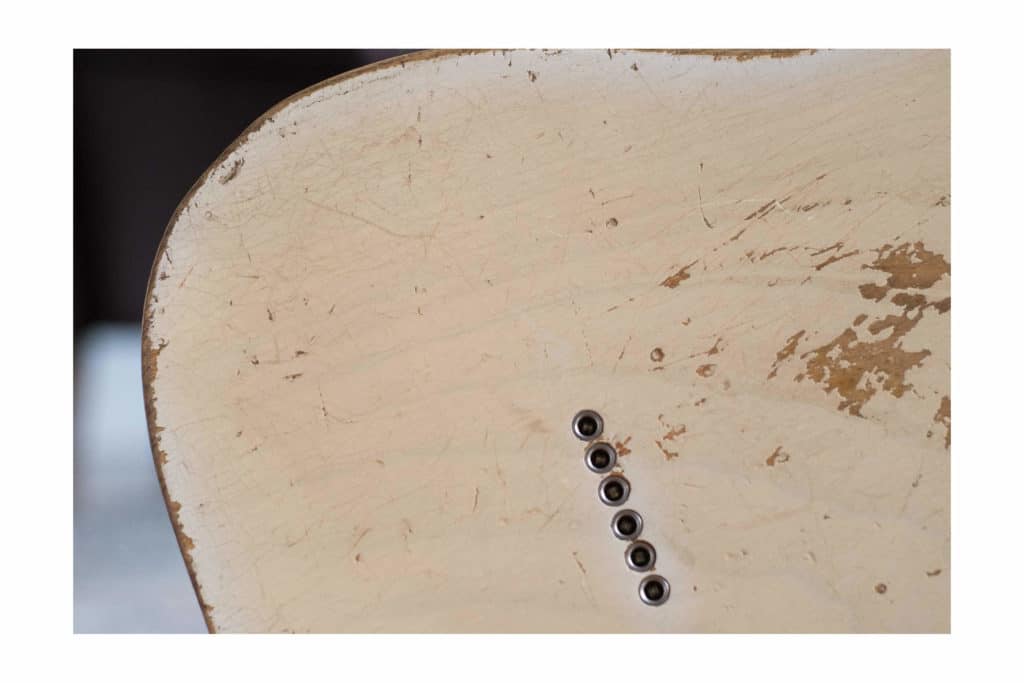
There is a big difference between the nitrocellulose finishes and the later poly finishes used during Fender’s CBS era.
El Blonde siguió siendo el acabado estándar de las Telecasters y las Esquire durante todo el mandato de Leo en Fender y se ofreció simultáneamente como opción de color personalizado para las Stratocasters, las Jazzmasters y las Jaguars.

